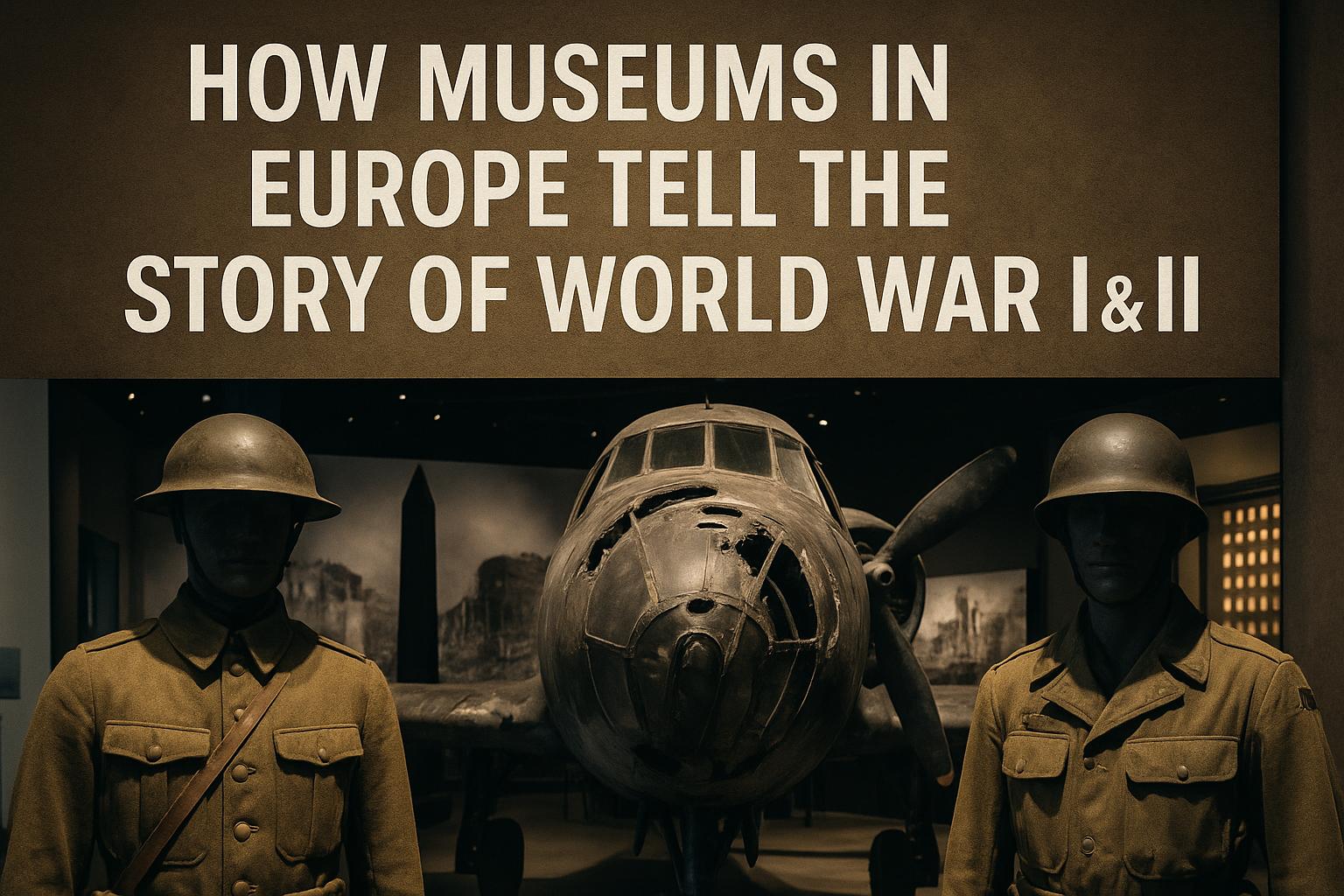Introduction
The European continent hosts a variety of museums dedicated to capturing and conveying the complex history of World War I and II. These institutions provide a window into the past through artifacts, exhibitions, and multimedia presentations. Their aim is not only to inform but also to create a deeper understanding of these conflicts. This article will explore how museums in Europe effectively tell the story of the two World Wars.
Museums Dedicated to World War I
Several museums across Europe focus on World War I, offering a detailed look at the conflict that shaped the 20th century. The In Flanders Fields Museum in Ypres, Belgium, is a notable example. This museum uses multimedia and immersive experiences to put visitors in the shoes of those who lived through the war. More information about their exhibitions can be accessed through their official website.
Situated in the heart of a region that bore witness to significant battles, the In Flanders Fields Museum offers a chronological exploration of World War I from its inception to its aftermath. Visitors can engage with personal narratives via interactive displays, highlighting individual experiences while presenting a broader context of the conflict’s global impact. The museum design itself, located within the reconstructed Cloth Hall in Ypres, stands as a testament to the city’s resilience and dedication to memory.
Further north, the Imperial War Museum in London, England, delves into both World Wars but dedicates substantial resources to World War I. Their collections feature personal stories, weaponry, and photographs that provide context and depth to the historical narrative. Visit their official site for current exhibitions and events.
The Imperial War Museum takes visitors on a journey through the intricacies of the war, emphasizing not only the major military events but also the social and cultural shifts that ensued. Exhibits explore the propagation of propaganda, the home front dynamics, and the innovations in warfare technology. Artefacts and personal anecdotes serve to humanize the history, offering insights into the lives affected by the war, both on the battlefield and at home.
Museums Focused on World War II
World War II museums in Europe generally engage visitors through large-scale exhibitions that document the events, technological advancements, and human experiences of the time. Germany’s Topography of Terror in Berlin serves as a stark reminder of the Nazi regime’s impact. Situated on the former grounds of the SS and Gestapo headquarters, this museum combines historical texts and photographs to capture the chilling environment of the era. To plan a visit, check their official page.
The Topography of Terror offers a meticulous account of how the oppressive machinery of the Nazi regime operated. Through photographs and documentation, visitors are confronted with the bureaucratic processes that facilitated significant human rights abuses. This museum does not shy away from examining the complicity and resistance that coexisted during this era, providing a comprehensive overview of the complex socio-political landscape of World War II Germany.
In Poland, the Museum of the Second World War in Gdańsk offers a comprehensive perspective on the war, with an emphasis on the Polish experience. The museum features extensive exhibitions that include artifacts and personal accounts. Further details are available on their website.
The Museum of the Second World War spans several floors, each providing an extensive array of exhibits that cover different aspects of the conflict. Emphasizing narratives often overlooked, it focuses on civilians’ experiences alongside military strategies. The Polish perspective is emphasized, detailing the significant impacts the war had on the nation and its population. The conveyance of personal stories and national narratives intertwines to enrich the visitor’s understanding of the global consequences of the war.
Interactive and Educational Features
A notable feature of many European museums dedicated to the World Wars is their use of technology to enhance learning experiences. For instance, the D-Day Story museum in Portsmouth, England, uses audio-visual displays to recount the events of the Normandy landings, emphasizing the human struggle behind military strategies. Visit their site for more educational resources.
By employing interactive technology, these museums adapt to modern educational needs, offering visitors an engaging and informative experience. The auditory and visual elements at the D-Day Story not only facilitate understanding but also ensure the retention of complex historical information. Such innovative methodologies encourage visitors to delve deeper into the history, promoting a participatory form of education that resonates with varied audiences.
Other institutions provide virtual reality and augmented reality options, allowing individuals to tour battlegrounds or view historical events as though they were present. These digital experiences can extend learning beyond the physical walls of the museum, making history more accessible to a global audience. Interactive exhibits and technology-infused presentations foster critical thinking and engagement, inviting visitors to ask questions and seek further information.
Conclusion
European museums dedicated to World War I and II provide an invaluable resource for understanding these monumental events in history. Through detailed exhibitions, interactive elements, and personal stories, they offer visitors a chance to reflect on the profound impact of these wars and their enduring legacies. These institutions not only preserve history but also educate future generations.
The significance of these museums extends beyond their walls. By fostering a dialogue about the past, they encourage a reflection on present-day global issues, invoking the lessons learned from these early 20th-century conflicts. Museums inspire critical thought and conversation, cultivating a comprehension of the human experience amidst warfare and peace. They serve as guardians of history and educators, reminding us of the complex threads that have shaped our modern world.

